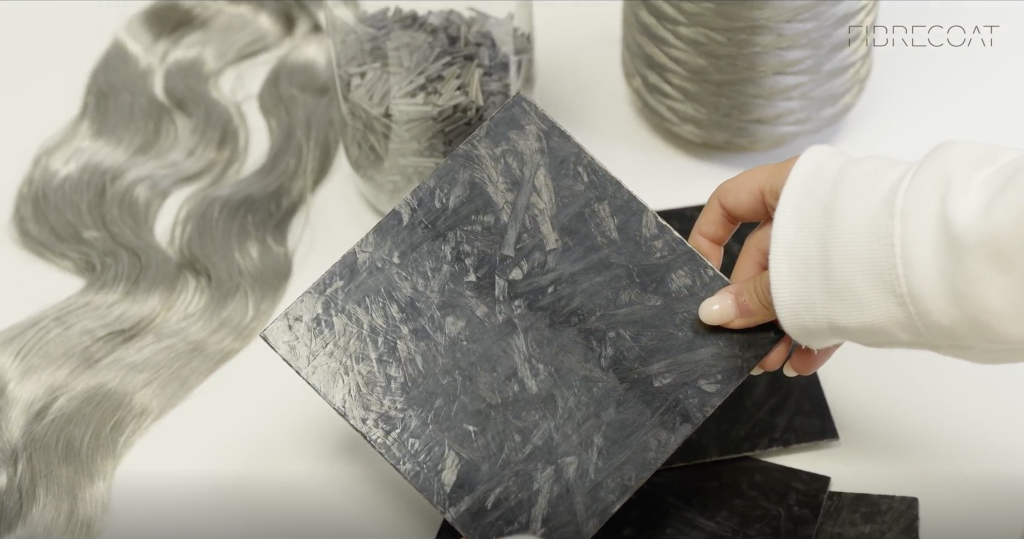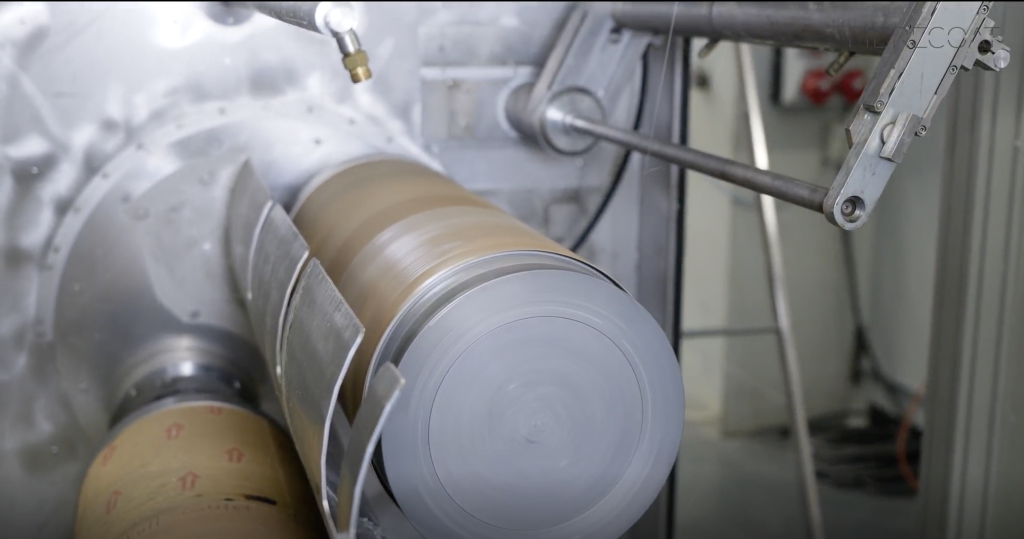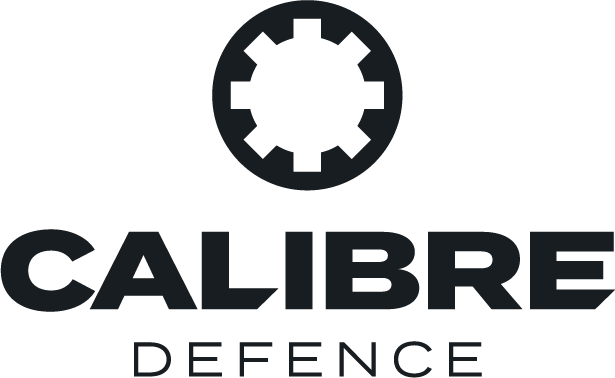Calibre interview: Robert Brüll, FibreCoat CEO
On the eve of the COVID pandemic in 2019, a group of three German scientists received a €1.2 million grant from the German Federal Ministry of Economic Affairs. Take your innovative new idea for coating glass fibres and set up a production facility, they were told. For five years they had worked on a new method for coating glass fibres that would drastically reduce the costs of traditional coated fibres. Starting a company just before a global pandemic isn’t ideal. But for FibreCoat, it meant more time to focus. Now fully operational and equity-backed, Calibre Defence met with Robert Brüll, CEO of FibreCoat to learn more about the company and its products.
What are high performance fibres?
High performance fibres are a critical component for modern life. You are probably familiar with fibre optic cables or carbon fibres. Fibre optic cables are used for high speed internet because of their unique properties. They are produced by melting glass and stretching it, before coating it and then winding it onto a spool. The resultant product is used to transmit data as pulses of light, as opposed to the electrical signals used to send data via the traditional copper wire infrastructure used for internet connections before fibre optics. Light has a higher frequency and so can carry more data. This is one example of a specialist fibre and the role it plays in society, Robert and his team set out initially to develop a production methodology that would reduce the costs of producing a fibre, making them more accessible and affordable initially to the automotive sector.

FibreCoat produces fibres that can be turned into a variety of products as shown here. Credit: FibreCoat
“High performance materials are so valuable, they can shield a vehicle or component from electromagnetic energy, or act as an insulator material for a spacecraft,” Robert explained on a call in April 2025. “But they’re very expensive and relatively slow to produce – it can cost up to £25,000 (€29,000) to produce a kilogram of thin gold fibre.” He added that lower-grade metals like aluminium still come in at prices up to £600 (approx €700). “We wanted to drive those costs down so that we could help the market for electric vehicles and those types of things, but we quickly found that there were also a lot of challenges that we could solve in defence.”
So, how are FibreCoat products made, and what are they used for? It’s useful to start with the finished product, which I will let Robert explain:
“The material is a fibre. If you think about cotton, you can process its fibres into fabrics and make shirts, but it can also be used to make carpet. Chaff is just one example of what our fibres can do. They can also be used in drones, where the fibres are built into a composite and combined with a plastic. If a drone is only made of plastic, then an EMP can shoot a drone down, but with FibreCoat products built in, the radiation is reflected. We have found similar applications in space, but with a different type of radiation. We also do tarps that can be used as a mobile hangar and a partner that produces decoy tanks is exploring using our fibres in those decoys to reflect energy and make it look like a more realistic target. The crazy part is that there is always something new coming up, it’s hard to keep the focus.”
There are a lot of uses across defence and Robert and his team are only just scratching the surface of what is possible, whilst also building additional production capabilities.
The FibreCoat production process
The process starts with a bath of molten glass; “You melt glass and you pull on a droplet extremely fast, stretching it out – it’s like honey, if you pull it then you might get a fibre,” Robert explained. The glass thread is combined with molten metal from a separate bath. “We can use any metal with a melting point below 1,000 degrees,” which means the company primarily works with aluminium, with a melting point of 660°C. If a new metal is needed, it is simply a case of swapping the bath of molten metal out – providing it is within that 1,000 degree category. “We are working on metals that melt above 1,000 degrees, especially nickel gold, but that requires a new coating module with very high temperature resistance,” Robert said.
Once the fibre has been coated, it is adjusted to the relevant size and can be turned into yarn, chopped for use as chaff, or woven into a textile depending on the end application. The use of gold is interesting given the cost, but the FibreCoat team have their sights set on space for that particularly pricey product: “The idea we are working on is to have deployable shields that can fold and unfold. The properties of gold in those applications are rather unique compared to other materials, but the price doesn’t justify the use for most other applications. Also, the weight of other materials would be much heavier to achieve the same result,” he said.

The FibreCoat production process is designed to lower the cost of high performance fibres. Here you can see a fibre being wound onto a spool. Credit: FibreCoat.
Using this method, FibreCoat is able to coat up to 3,000 metres of glass fibre per minute, whereas conventional carbon fibre can only produce up to 50 metres per minute. They can also use existing fibre coating facilities to produce their products, without having to build their own specialised factories, enabling fast scaling.
Rapid success
Robert joined the Institute for Textile Technology at Aachen University in February 2014, becoming head of the Technical Fibres department in 2018. There he worked with FibreCoat co-founders, Dr. Alexander Lüking and Richard Haas to develop a new way of coating high performance fibres, their experimental success led to a grant from the German government to take the fibres from the lab, into production. “We started the company in 2020 and we secured our first development contract in 2021, a company paid us to use our material and coating,” Robert explained. That client soon saw the promise in the fibres and started buying them by the kilogramme for testing, before progressing to large scale procurements in 2022 as the client began to scale its production of chaff.
“We started production in Germany, but the gas prices soared in Europe so we had to find a new solution – a pragmatic partner in Georgia,” Robert told me. The effects of increased gas prices were wide-reaching indeed, it seems. “Georgia turned out to be cost-competitive, energy is cheap and so are other costs,” he said. The company is also now working on a production facility in Germany, which will be producing more than the Georgia facility by the end of 2025.
“We now produce 15 tonnes of coated fibres per month, most of it goes to defence customers for chaff, which is used a lot in training as a countermeasure and also in live wars,” Robert said, adding that “munitions stocks for chaff are very low around the globe, and is one of those munitions that people are stocking up on.” FibreCoat produces its Alucoat fibre which is then chopped into a customer’s desired length – typically designed to be half the wavelength of a given radar – and packed into the chaff dispenser. When a radar directs its energy at an aircraft or ship and chaff is dispensed, it creates a cloud of fibres that all reflect radar energy. The fibres act like miniature antennas, leading to many false returns or a large unclear radar picture that is difficult to target.
It is worth noting that Russia’s helicopter operations in Ukraine were eventually constrained by its inability to resource sufficient flares and other countermeasures. Flights of helicopters in the opening phases of the invasion could be seen deploying volleys of flares pre-emptively or in response to attempted engagements. As the availability of these countermeasures fell, Russian helicopter losses climbed.
Despite FibreCoat’s rapid success in gaining a market foothold, some familiar challenges have emerged. “It takes a long time to get to market, and that market depends on slow procurement processes that are dominated by big slow corporations. We have funding, so it’s ok, but we need that funding in order to wait,” Robert explained.
There are also challenges around cooperation, but Robert was confident that this will change. “If the mindset shifted and we were able to encourage more cooperation inside our markets, bringing countries together, we could foster more collaboration and really get some speed. All of us, including the UK, could do much much more to keep Europe safe.”
Calibre comment
High-performance materials and advanced sciences in this field are central elements to the West’s defence industry. It is often developments in materials science that unlock new levels of performance, enabling new systems and concepts to be realised. For this reason, civil companies like FibreCoat are important to the success of the ecosystem as a whole. They provide the defence industry with new technologies and capabilities that have been developed with external funding, potentially for other purposes, and yet can bring huge benefits to defence products.
By Sam Cranny-Evans, published on 23rd April, 2025.

Sign Up for Updates!
Get insider news, tips, and updates. No spam, just the good stuff!






